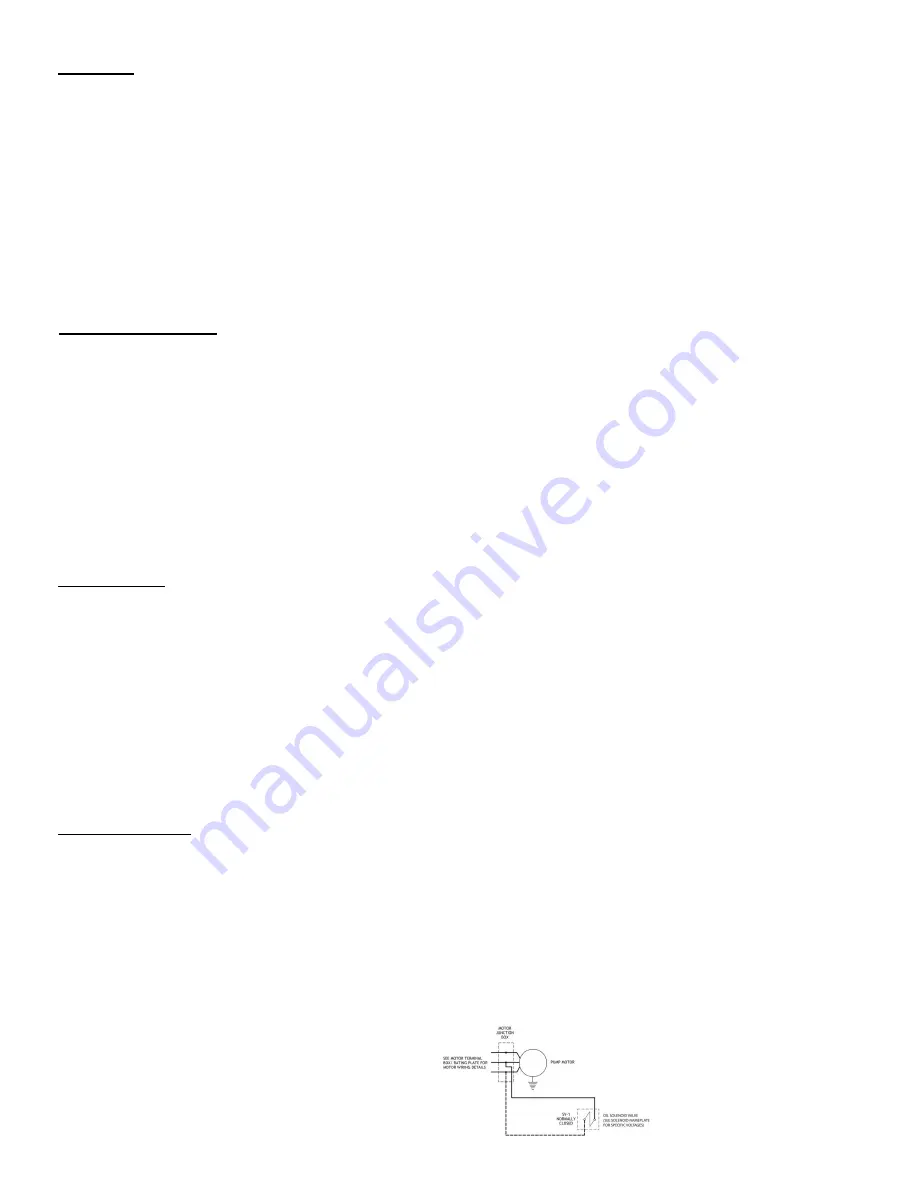
START-UP
1)
Be sure the suctions lines are free of foreign matter and perfectly tight. Use inlet protection screens or drop-out traps
on new installations where large welded piping is employed.
2)
Make sure the pump discharge is not obstructed
3)
Check that the cooling water is connected to the pump and available (If required)
4)
Check belt tension. Deflection should be 1/2” at the center (midway) span of the belt
5)
Check the oil level and adjust if necessary
6)
Ensure that the oil line solenoid is wired correctly and oil is flowing
Check for correct rotation of the pump
(counter-clockwise looking at pump drive shaft)
7)
Ensure the suction line is not under vacuum (at atmospheric pressure)
8)
Close the vent valve if one is used
9)
Start the pump
10)
Turn on cooling water and adjust flow according to previous instructions
11)
Adjust gas ballast as required
.
STOPPING THE PUMP
To stop the pump:
1) Close the isolation valve in the suction line
2) Vent the pump to atmosphere thru vent valve or gas ballast valve
3) Stop the pump
4) Turn off cooling water
NOTE: Venting the pump prior to shutdown returns the lubricating oil in the pumping chamber back to the oil reservoir
and prevents the pump from rotating backwards. Failure to follow proper shutdown
Procedures can result in both hydraulic and vacuum locking the pump and possibly causing pump
damage.
GAS BALLAST
The gas ballast valve is a manual valve located on the endplate. The valve introduces atmospheric air into the pumping
chamber to aid in removing condensable vapor contaminates from the vacuum pump oil. Vapor contaminates in the
pump oil can dramatically impair the pump performance by vaporizing during the low pressure section of the pumping
cycle thereby preventing gas from being drawn into the pump.
Isolate the pump from the system and fully open the gas ballast valve and run the pump overnight.
If this is not possible, partially open the valve during operation and run until oil is clean.
CAUTION: Gas ballast should NEVER be used if vapors being pumped are explosive, (ie: methane gas, hydrogen and certain solvent vapors)
When gases of an explosive nature are being handled, the safest procedure is to remove the gas ballast valve entirely
and plug or cap the pipe to which the gas ballast valve is attached.
Opening the gas ballast valve slightly will quite valve noise when pump is blanked-off.
SOLENOID VALVE
The solenoid valve feeds oil from the upper oil reservoir to the pumping cylinder via an oil line feeding each endplate.
The solenoid is N.C. (normally closed) and is used to keep oil in the upper reservoir from draining into the pump cylinder
when the pump is not in operation, thereby preventing oil from filling up the cylinder. Restarting the pump with the
cylinder filed with oil can cause hydraulic lock and damage to the pump.
Make sure to check the voltage requirements on the solenoid and that it is wired accordingly. Low or incorrect voltage
will cause the valve not to open and lead to a loss of oil lubrication to the pump causing severe damage to the pump. Hot
smell or smoke from the solenoid is cause for investigation. Do not energize the coil when it is removed from the valve
body, this will cause the coil to fail.
Oil Line Solenoid Valve
wiring diagram
Summary of Contents for DURAVAC RP Series
Page 8: ......
Page 23: ...NOTES ...























